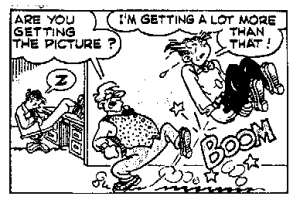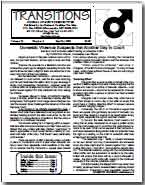Note: This 1998 article is truly a must read for anyone seriously interested in better understanding our gender dilemma and violence. Adam Jones has written prolifically about related issues and his work should be required reading .
The Globe and Males
The Other Side of Gender Bias in Canada’s National Newspaper
by Adam Jones
Contents:
[Note: Readers interested in an overview of the philosophical argument are invited to proceed directly to “A Polemic and A Paradigm”.]
Introduction
One of the central accomplishments of the women’s movement over the last two decades has been to draw media attention to the physical suffering and institutionalized victimization of women in North American society. In Canada, the aftermath of Marc Lépine’s terrorist rampage at the University of Montreal accelerated the nationwide flurry of analysis concerning the issue of violence against women, which was generally held to be the relevant context for Lépine’s actions.
The other side of human suffering and victimization in Canadian society has, unfortunately, passed almost unnoticed by mainstream media. Aspects of suffering which could be considered largely or specifically “male” have tended to be ignored, dismissed, or distorted. This has served to highlight the broad range of female victimization experiences – an important and worthy subject. But it has also denigrated or de-emphasized the male side, which in any humane and objective value system ought to be accorded every bit as much consideration and concern.
This phenomenon does not seem to be the result of a “boomerang” effect in media coverage. We are not dealing here with matters which have been male preserves in the past – something which might justify greater attention to the female side to help redress the balance. Rather, in this respect, the male experience has never been a matter for social concern as such, for reasons that will be examined later.
All this suggests an anti-male bias, unfashionable though such a concept may be to progressive minds. To clarify some essential features of this bias, I propose to examine a series of articles from Canada’s self-proclaimed “National Newspaper,” the Toronto Globe and Mail. The articles were published between March 10 and June 15 1990. They constitute part (but only part) of the Globe‘s wide-ranging analysis of social issues, including “women’s issues” – that is, issues and social problems which are allegedly indicative (predominantly or exclusively) of the female experience in our society.
It is important to mention that the examples of anti-male bias dealt with here are not necessarily representative of the Globe‘s overall coverage of social issues, or women’s issues, during the sample period. In fact, much of this overall coverage is solid, informative, and unbiased. Focusing on women’s experiences performs the vitally important function of bringing women’s concerns to wider public attention. These positive elements are sometimes to be found even in articles which we will otherwise criticize for their anti-male bias.
A few comments on methodology may be in order. The articles were selected, over a roughly three-month period, on the basis of their perceived bias. Although they may well be suggestive of a wider trend of anti-male bias in media coverage, I have chosen to limit the present inquiry to the subject of physical victimization (or depicted physical brutalization in films, TV, and cartoons). In a few cases, I refer to other examples of coverage which reflect biased, insensitive, or dismissive mindsets. Such mindsets, in my view, could well account for the woefully inadequate treatment of male victimization, and I discuss them at greater length in the concluding sections of the paper.
I also devoted some time to follow-up research. Here, I examined the microfilmed version of the Globe and Mail for the period March 1 – June 30 1990. I wanted to re-read Globe coverage more systematically, in the light of the patterns of bias I had detected during the original compilation process. I also wanted to see whether these patterns of bias were mitigated or offset by any other Globe coverage during, or shortly before or after, the sample period. (Hence the decision to examine coverage from a point two weeks prior to the first article selected, and continuing two weeks after the last article selected. The overall sample period was therefore four months.) This follow-up research turned up no evidence that the patterns of bias were offset by other Globe coverage. In several instances, in fact, further evidence for these patterns came to light. I have incorporated this supplementary evidence at various points in the text.(1)
Of course, the argument here will not by itself demonstrate clear trends in the Globe‘s coverage over time. Nor does the evidence here serve as proof of bias in the media as a whole. It seems to me, though, that a broader bias does exist, and that it should be easily perceptible to anyone who can be provided with the analytical tools to recognize it. Thus I hope that by isolating some of the features and strategies of Globe coverage, the average reader will be able to test my propositions for himself or herself. Researchers, moreover, might find the present work useful in formulating hypotheses for more systematic content analysis: if a clear pattern of sexist bias is apparent in a diverse selection of articles culled from just four months of coverage in Canada’s most prestigious newspaper, the topic may well warrant further attention and exploration.
With one minor exception (to be noted), all articles cited here are Globe editorials or feature pieces by staff writers, whether bylined or uncredited. None is the work of a Globe columnist, whose contribution could be seen as reflecting the views of an individual, rather than overall Globe standards and editorial strategies.



